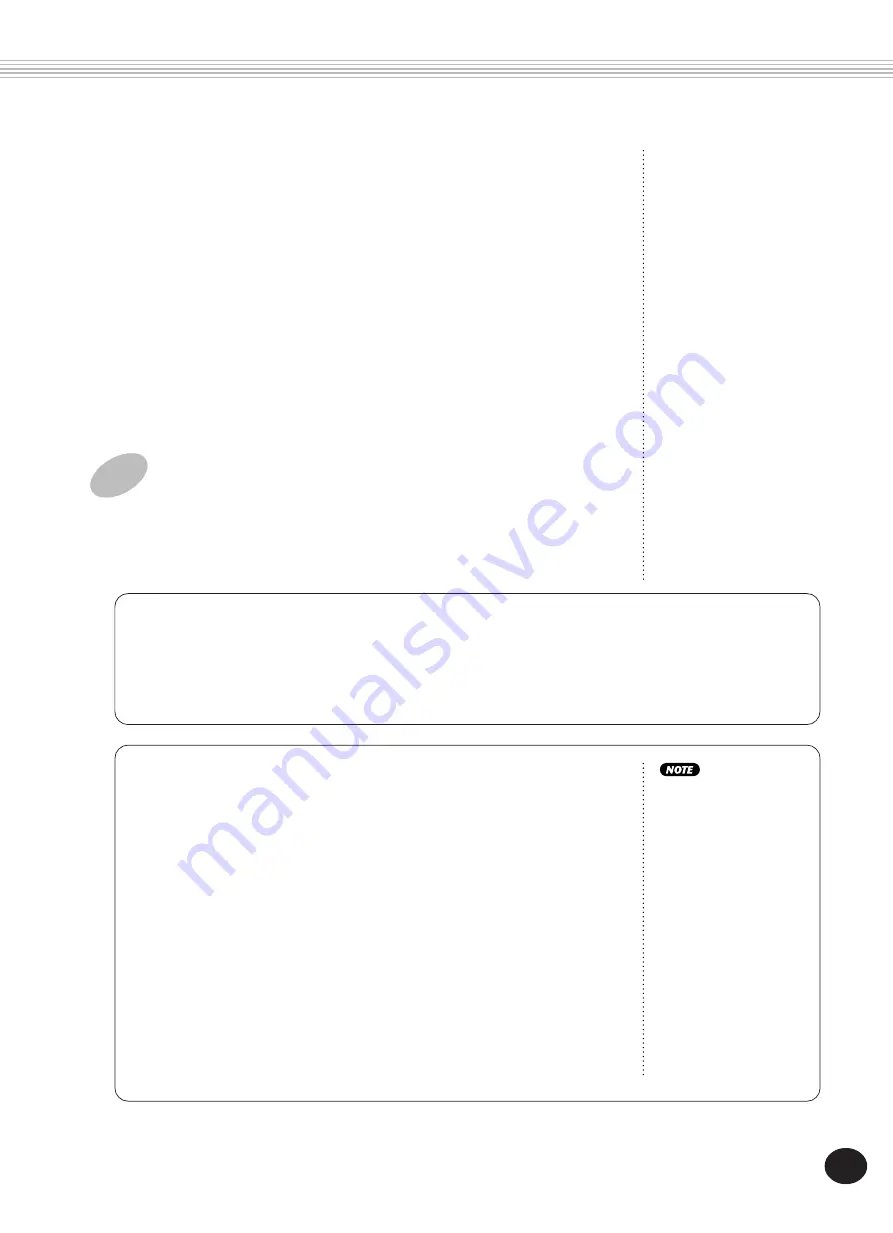
69
3)
Press the + button in the numeric keypad.
This actually records the chord to the selected block and automati-
cally moves to the next block.
This step is necessary; the chord is not actually recorded until you
press the + button. (Pressing the - button will select the previous
block without recording the chord.)
To record a sequence of chords, repeat steps 2) and 3) above (play a
chord, select the next step, play a different chord, select the next
step, etc.).
Recording a Space
To leave a block empty (creating a space between blocks), simply select the next block without entering a
chord. To leave the rest of a row empty and start at the next row, use the + button to move to the first block
in the next row and start recording from that position. (For more infomation, see the hint “Using Spaces” on
page 70.)
4
Stop recording and exit from the record mode.
When finished recording the chords, press the RECORD button. This
exits from the record mode and lets you playback your newly re-
corded chords. (See page 66.)
Playing the Accompaniment During EZ Chord Recording
It may be helpful for you to hear the style and auto accompaniment as you are
recording chords in the EZ Chord function. To do this:
1)
Press the STYLE button.
This briefly calls up the Style mode, while keeping EZ Chord recording
active.
2)
Select the desired style.
Before the display reverts back to EZ Chord (a couple of seconds after
pressing the STYLE button), use the numeric keypad to select a style.
3)
Start accompaniment playback.
Press the START/STOP button.
4)
Record the chord.
Play the desired chord in the auto accompaniment section of the key-
board. Remember that the chord is not actually recorded until you press
the + button to move to the next block.
If you manually enter
the chord root and type
(as described on page
68), the chord and bass
accompaniment will not
sound.
AUTO ACCOMPANIMENT — THE STYLE MODE






























